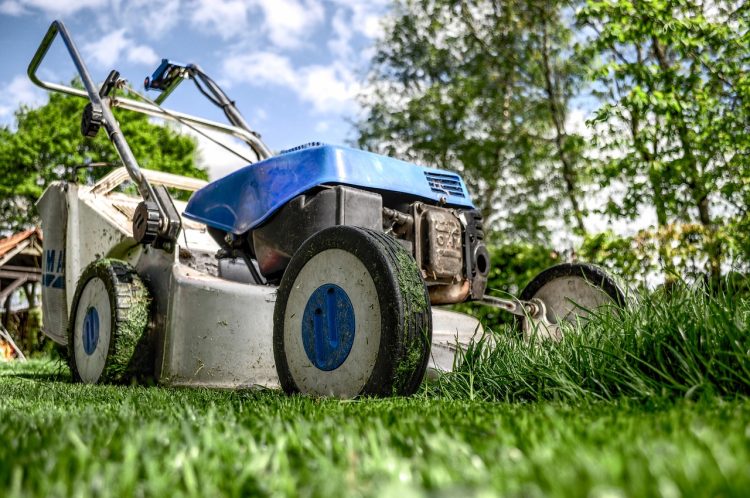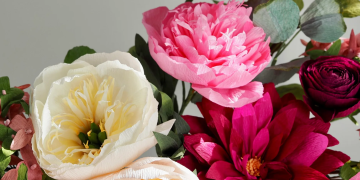A beautiful garden doesn’t have to mean hours of weeding, watering, and pruning every week. With a bit of thoughtful planning, you can create a low-maintenance garden that looks stunning without requiring constant upkeep. By choosing the right plants, designing with simplicity in mind, and using smart gardening techniques, you can enjoy a flourishing garden with minimal effort. This guide will walk you through the essential steps to plan a low-maintenance garden that allows you to spend more time enjoying your outdoor space and less time working in it.
Assess Your Garden Space
The first step in planning a low-maintenance garden is to assess your garden space. Take note of the size of your garden, the type of soil, the amount of sunlight it receives, and any existing features such as trees or structures. Understanding the conditions of your garden will help you make informed decisions about the types of plants and materials that will thrive with minimal care.
Consider dividing your garden into different zones based on sunlight, soil type, and intended use. For example, you may have a sunny area that is perfect for drought-tolerant plants and a shaded corner that could be turned into a tranquil seating area. By understanding the unique characteristics of each part of your garden, you can create a low-maintenance design that works harmoniously with the natural conditions.
Choose Low-Maintenance Plants
Choosing the right plants is key to creating a low-maintenance garden. Look for plants that are well-suited to your local climate and soil type, as these will require less water, fertilizer, and care. Native plants are an excellent choice because they have evolved to thrive in your region’s conditions, making them more resistant to pests and diseases.
Perennials are also a great option for low-maintenance gardens because they return year after year without needing to be replanted. Consider low-maintenance perennials such as lavender, coneflower, sedum, and hostas. Ornamental grasses, such as feather reed grass or fountain grass, add texture and movement to your garden while requiring very little care.
For a pop of color, opt for hardy flowering shrubs like hydrangeas or butterfly bushes. These plants provide vibrant blooms with minimal pruning. Groundcovers, such as creeping thyme or ajuga, can help suppress weeds and reduce the need for mulching, while also adding interest to your garden beds.
Minimize Lawn Areas
Lawns can be one of the most time-consuming parts of a garden to maintain. Regular mowing, fertilizing, and watering can take up a significant amount of time and resources. To reduce maintenance, consider minimizing the size of your lawn or replacing it entirely with low-maintenance alternatives.
Instead of a traditional lawn, you could create pathways using gravel, pavers, or stepping stones. These materials require little to no upkeep and can add a sense of structure to your garden. Another option is to replace lawn areas with groundcovers that require less water and mowing, such as clover or creeping thyme. These alternatives provide a lush, green look without the hassle of traditional lawn care.
Use Mulch to Suppress Weeds
Weeding is a common garden chore that can take up a lot of time, but using mulch can help keep weeds at bay. Mulch not only suppresses weeds but also helps retain moisture in the soil, reducing the need for frequent watering. Organic mulches, such as shredded bark, straw, or wood chips, gradually break down and improve soil quality over time.
Apply a layer of mulch around your plants, making sure to keep it away from the base of the stems to prevent rot. Mulch should be about 2-3 inches deep to effectively suppress weeds and retain moisture. Replenish the mulch each year to maintain its effectiveness and keep your garden beds looking neat and tidy.
Incorporate Hardscaping Elements
Hardscaping refers to the non-plant elements of your garden, such as paths, patios, walls, and decorative features. Incorporating hardscaping elements into your garden design can significantly reduce maintenance. Gravel pathways, stone patios, and wooden decks require little upkeep and provide structure and function to your garden.
Raised beds are another excellent hardscaping element for a low-maintenance garden. By raising the level of your garden beds, you can reduce the need to bend over while planting, weeding, or harvesting, making garden care more comfortable. Raised beds also help keep weeds out and make it easier to control soil quality.
Consider adding seating areas where you can relax and enjoy your garden without feeling the need to work in it constantly. Benches, hammocks, or even a simple set of chairs and a table can create a welcoming space where you can unwind and appreciate your low-maintenance oasis.
Choose Drought-Tolerant Plants
Watering can be one of the most time-consuming aspects of garden maintenance, especially during the hot summer months. To reduce the need for frequent watering, choose drought-tolerant plants that can thrive with minimal moisture. Succulents, such as sedum and echeveria, are excellent choices for a low-water garden. Other drought-tolerant options include lavender, yarrow, sage, and Russian sage.
Grouping plants with similar water needs together can also make watering easier and more efficient. Create zones in your garden for plants that require more moisture and zones for drought-tolerant plants, allowing you to focus your watering efforts where they are needed most.
Install a Drip Irrigation System
To further reduce the time and effort spent on watering, consider installing a drip irrigation system. Drip irrigation delivers water directly to the base of plants, minimizing evaporation and ensuring that the roots receive the moisture they need. This type of system is more efficient than overhead watering and can be set on a timer to provide consistent moisture without requiring your daily attention.
A soaker hose is another option for low-maintenance watering. Simply lay the hose along your garden beds, and it will slowly release water into the soil. Both drip irrigation and soaker hoses can be connected to a timer, allowing you to automate your watering routine and save time.
Limit High-Maintenance Plants
While it may be tempting to grow a variety of plants in your garden, high-maintenance plants can quickly turn your garden into a time-consuming project. Avoid plants that require frequent pruning, deadheading, or staking. Instead, choose plants that naturally maintain their shape and don’t need constant attention.
Avoid plants that are susceptible to pests and diseases, as they will require more intervention to keep them healthy. Native plants are generally more resistant to local pests and are adapted to the local climate, making them a low-maintenance choice. Research each plant’s requirements before adding it to your garden to ensure it fits with your low-maintenance goals.
Consider Artificial Grass
If you love the look of a green lawn but want to avoid the maintenance that comes with it, consider installing artificial grass. Modern artificial grass looks very realistic and requires virtually no upkeep, aside from an occasional rinse to remove dust and debris. Artificial grass is an excellent option for areas where a traditional lawn is impractical or for homeowners who want to reduce the time spent on lawn care.
Create Simple Garden Designs
When planning a low-maintenance garden, simplicity is key. Avoid overly complicated designs with too many different plant varieties or intricate features. Instead, focus on creating simple, clean lines and using a limited palette of plants that work well together. Repetition of plants and materials can create a cohesive and visually appealing garden without adding complexity.
Consider using large blocks of a single plant species or mass plantings of the same type of flower to create impact without the need for constant upkeep. Simple garden designs are not only easier to maintain but also provide a sense of calm and order that is pleasing to the eye.
Add Automatic Lighting
Adding outdoor lighting to your garden can enhance its beauty and make it more enjoyable in the evenings, but manual lighting can be a hassle. To keep things low-maintenance, opt for automatic outdoor lighting solutions. Solar-powered lights are a great option because they don’t require any wiring or electricity and turn on automatically at dusk. You can also use LED lights with timers to create a well-lit garden that requires no manual intervention.
Embrace Natural Growth
Finally, one of the best ways to keep your garden low-maintenance is to embrace a more natural approach to gardening. Allow plants to grow into their natural shapes rather than constantly pruning them to fit a specific form. Let some areas of your garden grow wild to encourage biodiversity and create a habitat for pollinators and other beneficial wildlife.
A naturalistic garden design not only reduces the amount of work required but also creates a more relaxed and inviting atmosphere. By letting go of the need for perfection, you can create a garden that is both beautiful and easy to care for.










